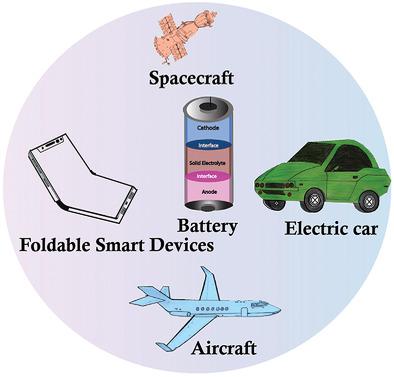当前位置:
X-MOL 学术
›
Adv. Energy Mater.
›
论文详情
Our official English website, www.x-mol.net, welcomes your
feedback! (Note: you will need to create a separate account there.)
Solid Electrolytes for High‐Temperature Stable Batteries and Supercapacitors
Advanced Energy Materials ( IF 24.4 ) Pub Date : 2020-11-26 , DOI: 10.1002/aenm.202002869 Vignesh Kumaravel 1, 2 , John Bartlett 1, 2 , Suresh C. Pillai 1, 2
Advanced Energy Materials ( IF 24.4 ) Pub Date : 2020-11-26 , DOI: 10.1002/aenm.202002869 Vignesh Kumaravel 1, 2 , John Bartlett 1, 2 , Suresh C. Pillai 1, 2
Affiliation

|
Reports of recent fire accidents in the electronics and electric vehicles (EVs) industries show that thermal runaway (TR) reactions are a key consideration for the industry. Utilization of solid electrolytes (SEs) could be an important solution in to the TR issues connected to exothermic electrochemical reactions. Data on the thermal stability of modern SEs, ionic transport mechanisms, kinetics, thermal models, recent advances, challenges, and future prospects are presented in this review. Ceramic polymer nanocomposites are the most appropriate SEs for high‐temperature stable batteries (in the range of 80–200 °C). Hydrogels and ionogels can be employed as stable, flexible, and mechanically durable SEs for antifreeze (up to –50 °C) and high‐temperature (up to 200 °C) applications in supercapacitors. Besides the thermal safety features, SEs can also prolong the lifecycle of energy storage devices in next‐generation EVs, space devices, aviation gadgets, defense tools, and mobile electronics.
中文翻译:

高温稳定电池和超级电容器用固体电解质
最近在电子和电动汽车(EV)行业发生火灾的报告表明,热失控(TR)反应是该行业的主要考虑因素。固态电解质(SEs)的使用可能是解决与放热电化学反应有关的TR问题的重要解决方案。本文介绍了有关现代SE的热稳定性,离子迁移机理,动力学,热模型,最新进展,挑战和未来前景的数据。陶瓷聚合物纳米复合材料是高温稳定电池(温度范围为80–200°C)最合适的SE。水凝胶和离子凝胶可用作稳定,灵活且机械耐用的SE,可用于超级电容器中的防冻剂(最高–50°C)和高温(最高200°C)。除了热安全功能,
更新日期:2021-01-20
中文翻译:

高温稳定电池和超级电容器用固体电解质
最近在电子和电动汽车(EV)行业发生火灾的报告表明,热失控(TR)反应是该行业的主要考虑因素。固态电解质(SEs)的使用可能是解决与放热电化学反应有关的TR问题的重要解决方案。本文介绍了有关现代SE的热稳定性,离子迁移机理,动力学,热模型,最新进展,挑战和未来前景的数据。陶瓷聚合物纳米复合材料是高温稳定电池(温度范围为80–200°C)最合适的SE。水凝胶和离子凝胶可用作稳定,灵活且机械耐用的SE,可用于超级电容器中的防冻剂(最高–50°C)和高温(最高200°C)。除了热安全功能,











































 京公网安备 11010802027423号
京公网安备 11010802027423号